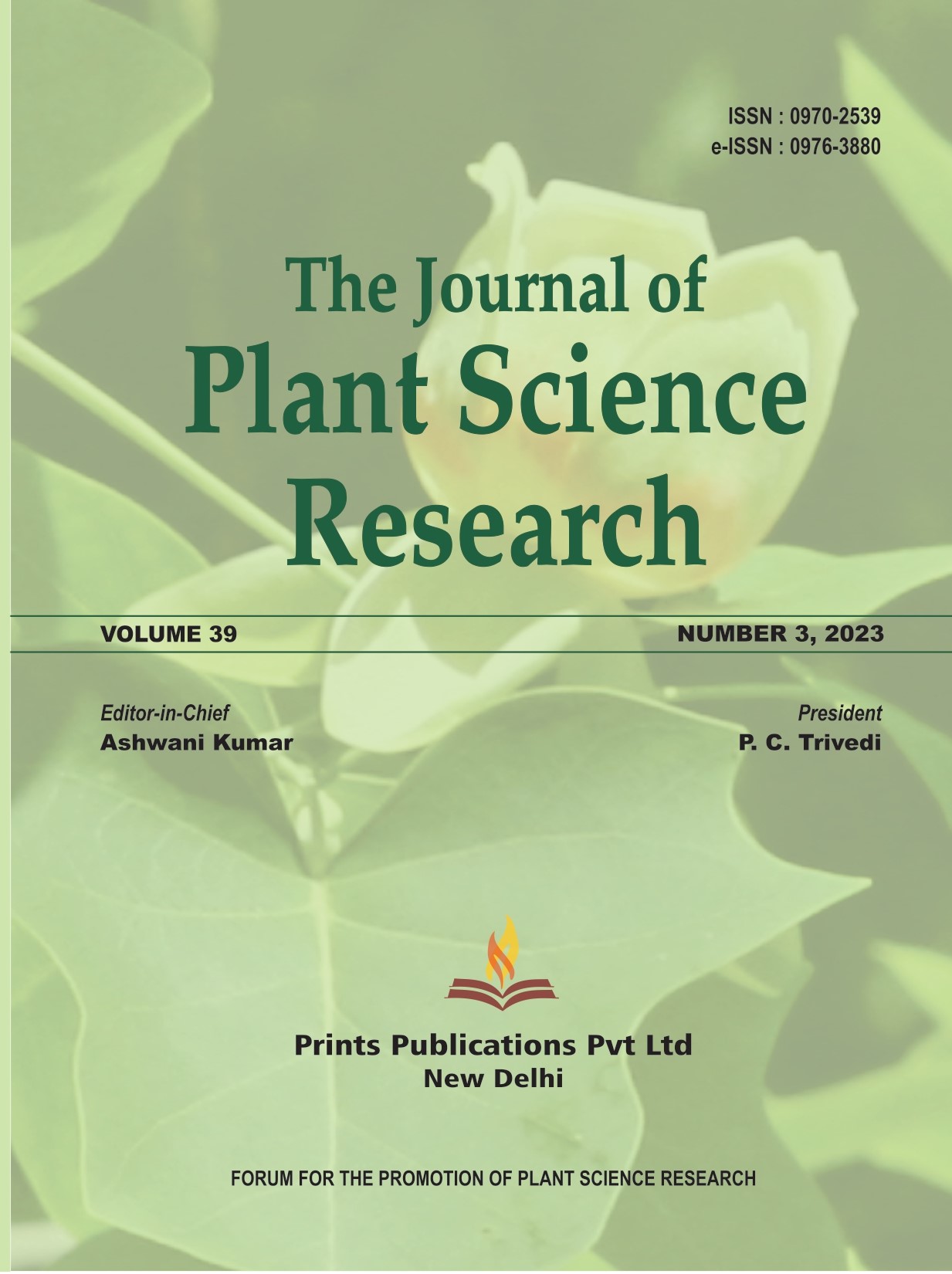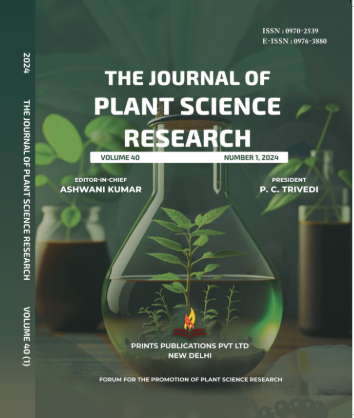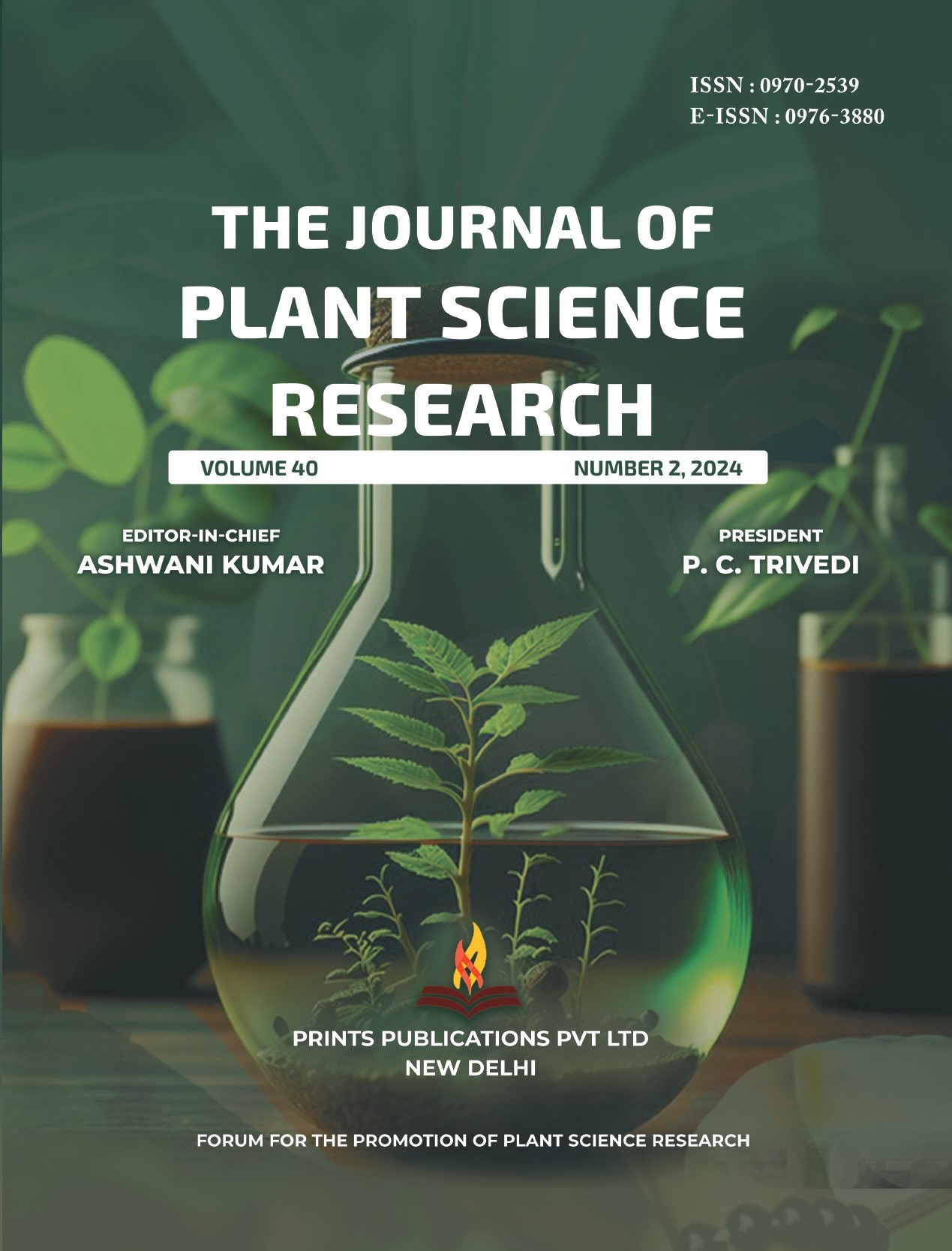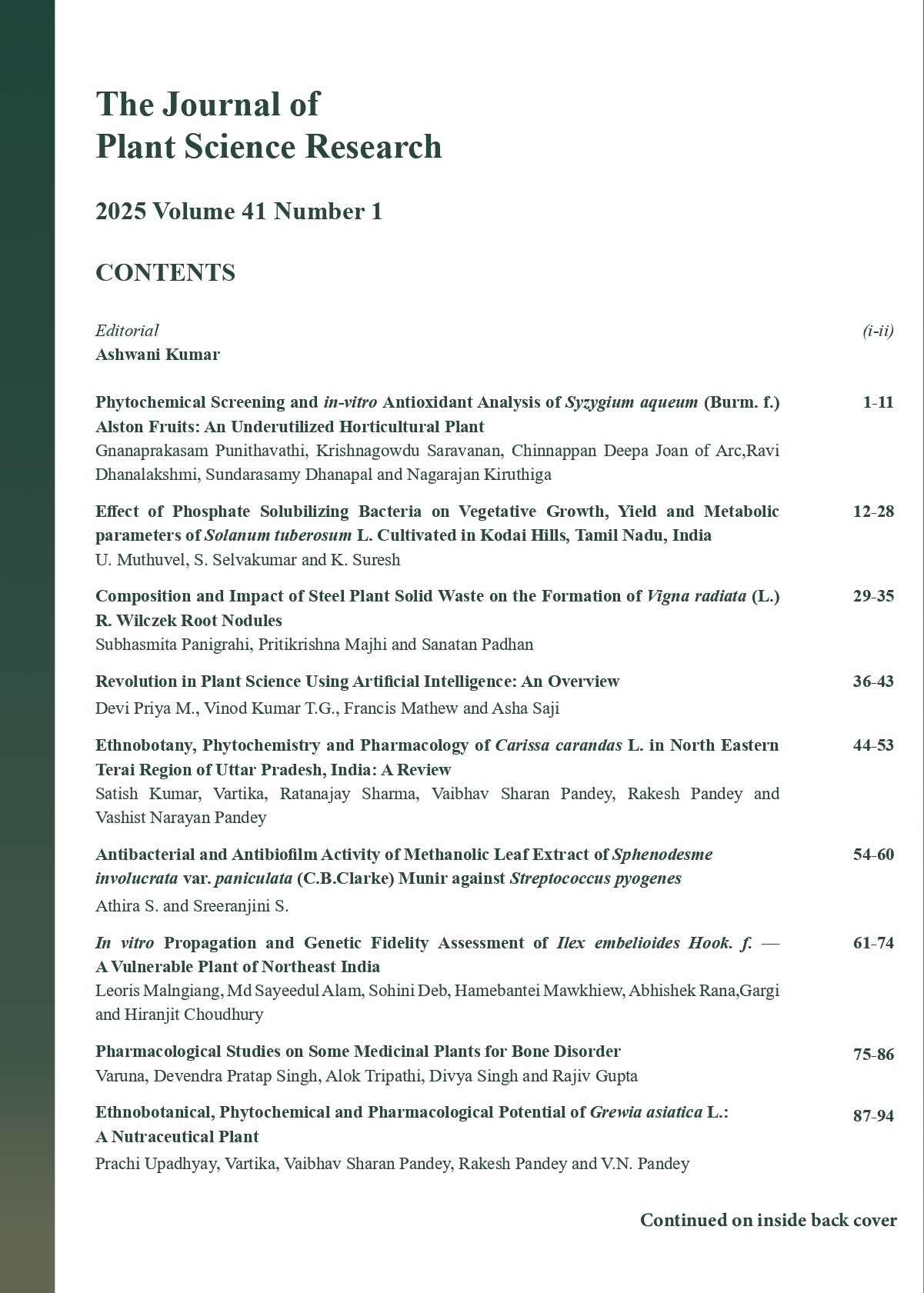The Journal of Plant Science Research - A UGC Care-Listed Journal
Published in Association with Forum For the Promotion of Plant Science Research
Current Volume: 41 (2025 )
ISSN: 0970-2539
e-ISSN: 0976-3880
Periodicity: Tri-annual
Month(s) of Publication: April, August & December
Subject: Botany
DOI: 10.32381/JPSR
Online Access is Free for Life Member
The Uncultivated and Wild Leafy Vegetable Consumption in Devarakonda
By : Rama Raju Cherkupally
Page No: 113-119
Abstract
Many uncultivated and wild leafy vegetables have been utilized as a food and as folklore medicine since time immemorial. Such vegetables have been part and parcel of the food dishes, especially to the ancient rural and semi-urban dwellers. Despite much nutritional value, researchers and agricultural scientists have given less attention to such vegetables.
A total of 38 plant species belonging to 20 families was recorded after conducting surveys. Family Amaranthaceae recorded the highest number of species (10 species) followed by Caesalpinaceae (5 species), Lamiaceae, Apiaceae, Malvaceae, Convolvulaceae, Aizoaceae (2 species each) and remaining all one species each. It is observed that tribal communities not only used for self-consumption, but they also tried to sell by tribal women seasonally in weekly markets to earn income. Uncultivated leafy vegetables like chenchali, bacchali, puntikura, payalkura, ponagantikura, chintachiguru and tootikura are also sold in towns, as they are preferred by people in towns, because they were liked by urban dwellers, and were recognized as well for health. For several reasons, people no longer eat wild seasonal uncultivated greens as in former years, which is the reason for low consumption in this population.
Authors :
Rama Raju Cherkupally : Department of Botany, M.K.R. Government Degree College, Devarakonda, Mahatma Gandhi University, Telangana State, India.
DOI: https://doi.org/10.32381/JPSR.2021.37.01.15






